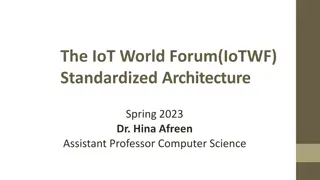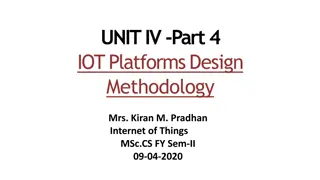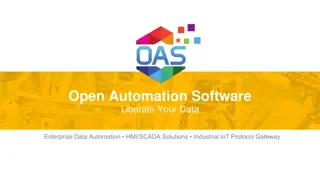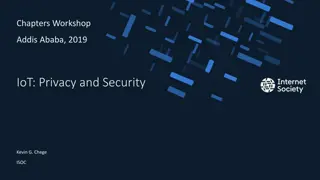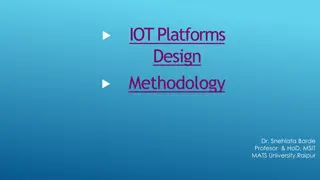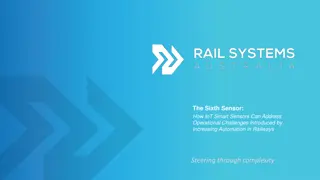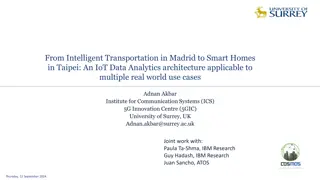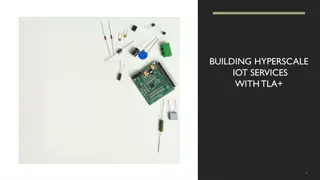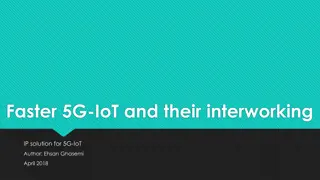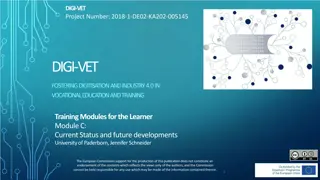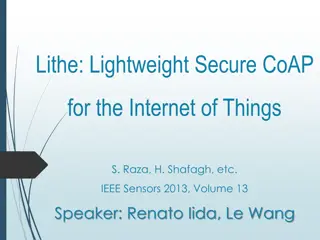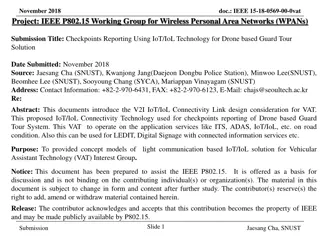IoT Platforms Design Methodology for Efficient System Development
Designing IoT systems can be complex due to the interactions between various components like devices, network resources, web services, analytics, applications, and servers. This article presents a generic design methodology for IoT systems that is independent of specific products or services, leading to reduced design complexity and improved interoperability. The methodology includes purpose and requirement specification, process specification, domain model specification, information model specification, and service specification, ensuring efficient system development and maintenance.
Download Presentation

Please find below an Image/Link to download the presentation.
The content on the website is provided AS IS for your information and personal use only. It may not be sold, licensed, or shared on other websites without obtaining consent from the author. Download presentation by click this link. If you encounter any issues during the download, it is possible that the publisher has removed the file from their server.
E N D
Presentation Transcript
UNIT IV IOT Platforms Design Methodology Mrs. Kiran M. Pradhan Internet of Things MSc.CS FY Sem-II 06-04-2020
Introduction Designing IoT systems can be a complex and challenging task as these systems involve interactions between various components such as IoT devices and network resources, web services, analytics components, application and database servers. IoT system designers often tend to design IoT systems keeping specific products/services in mind. So that designs are tied to specific product/service choices made. But it make updating the system design to add new features or replacing a particular product/service choice for a component becomes very complex, and in many cases may require complete re- design of the system.
Introduction Here we discuss a generic design methodology for IoT system design which is independent of specific product, service or programming language. IoT systems designed with the proposed methodology have reduced design, testing and maintenance time, better interoperability and reduced complexity.'
IOT Platforms DesignMethodology It includes: Purpose & RequirementsSpecification Process Specification Domain Model Specification Information Model Specification Service Specification
IOT Platforms DesignMethodology IoT Level Specifications Functional view Specification Operational View Specification Device & component Integration Application Development
Purpose & RequirementsSpecification The first step in IoT system design methodology is to define the purpose and requirements of the system. In this step, the system purpose, behavior and requirements are captured.
Purpose & RequirementsSpecification Purpose : A home automation system that allows controlling of the lights in a home remotely using a web application. Behavior : The home automation system should have auto and manual modes. In auto mode, the system measures the light level in the room and switches on the light when it gets dark. In manual mode, the system provides the option of manually and remotely switching on/off the light. System Management Requirement : The system should provide remote monitoring and controlfunctions.
Thankyou Ref: IOT by Ashdeep Bahga &VijayMadisetti 51





